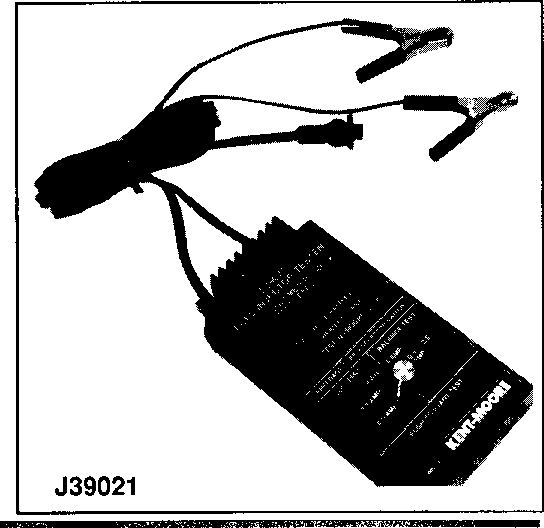SMU - SEC. 6E3, 6E2 DRIVEABILITY AND EMISSIONS

Subject: DRIVEABILITY AND EMISSIONS, INTRODUCTION OF J-39021 FUEL INJECTOR TESTER
Model and Year: 1980-93 ALL PASSENGER CARS 1984-93 M VAN, 1990-93 L VAN 1980-93 S/T TRUCK AND 1990-93 LUMINA APV
THIS BULLETIN CANCELS AND SUPERSEDES DEALER SERVICE BULLETIN NO. 93-127-6E, DATED MARCH 1993. PASSENGER CARS HAVE BEEN ADDED AS WELL AS INFO ABOUT THE COIL TEST AND A LIST OF DRIVEABILITY PROBLEMS.
In February, 1993, Kent-Moore shipped a new Fuel Injector Tester, tool J-39021, as part of the Essential Tool Program. This tool has the capability of performing injector balance and coil tests on all GM and many non-GM fuel injection systems. The injector balance test is one familiar to most technicians where fuel pressure drop is measured as an injector is energized for a set period of time. This fuel pressure drop is compared to that of the other injectors in the vehicle or a published standard.
The injector coil test is a new test whereby the injector's resistance is measured during normal operation by feeding a fixed current through the injector and measuring the voltage across the injector. Injector coil failures are more accurately detected using this method than by simply measuring the injector's resistance with an ohmmeter. Refer to the instructions included with the tool for testing procedures.
This tool, and the injector coil test specifically, were developed to detect deterioration of injector coils. Injector coils may corrode, resulting in a change in coil resistance and one or more of the following driveability symptoms:
- rough idle - engine miss/surge - stall after start/hard start - fails emission test - poor fuel economy - exhaust odor - service engine soon/malfunction indicator lamp on
The injector coil test procedure also requires the use of the Digital Voltmeter, J-39200, to measure the voltage across the injector during the test. The Fuel Injector Tester, J- 39021, supplies one of three fixed current values throughout the duration of the test. Selection of the supply current value (0.5, 2.5, or 4.0 amps) is based on the injector's specified resistance. When the push-to-start-test button is pressed, the tool energizes the injector coil for five seconds. The condition of the injector coil (pass/fail) is determined by the voltage reading displayed on the voltmeter while the injector is energized. Instructions and specifications for most GM fuel injectors are included with the tool.

General Motors bulletins are intended for use by professional technicians, not a "do-it-yourselfer". They are written to inform those technicians of conditions that may occur on some vehicles, or to provide information that could assist in the proper service of a vehicle. Properly trained technicians have the equipment, tools, safety instructions and know-how to do a job properly and safely. If a condition is described, do not assume that the bulletin applies to your vehicle, or that your vehicle will have that condition. See a General Motors dealer servicing your brand of General Motors vehicle for information on whether your vehicle may benefit from the information.
